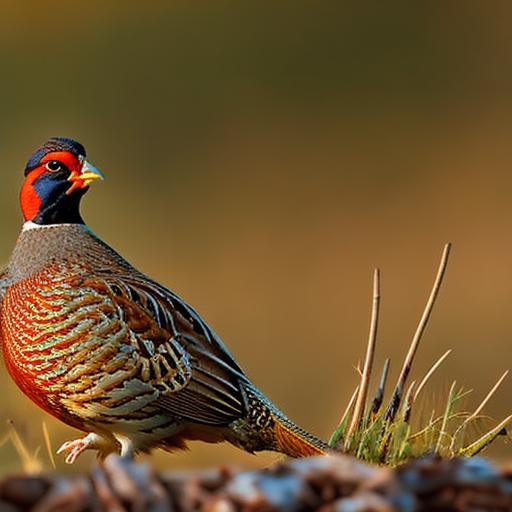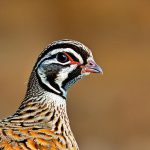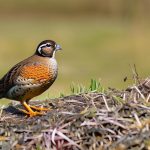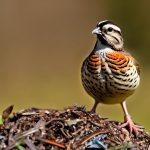Keeping pheasants and quail together can be a rewarding experience for bird enthusiasts and farmers alike. Both pheasants and quail are popular game birds, known for their beautiful plumage and delicious meat. They are also relatively easy to care for, making them a great addition to any farm or aviary. However, it’s important to understand the unique needs of each species in order to successfully keep them together. In this article, we will explore the compatibility of pheasants and quail, as well as the ideal habitat, feeding and nutrition, health management, and breeding and reproduction for these birds. By understanding these key aspects of keeping pheasants and quail together, you can ensure the health and happiness of your birds while enjoying the benefits they bring to your farm or aviary.
Key Takeaways
- Pheasants and quail can be kept together in the same habitat, but it requires careful planning and consideration of their compatibility.
- Providing the ideal habitat for pheasants and quail involves creating a mix of open spaces, cover, and nesting areas to meet their specific needs.
- A balanced diet is crucial for the health and well-being of pheasants and quail, including a mix of commercial feed, grains, and access to insects and vegetation.
- Regular health checks, proper hygiene, and disease prevention measures are essential for managing the health of pheasants and quail in a shared environment.
- Understanding the breeding behavior and providing the right conditions can lead to successful reproduction of pheasants and quail in captivity.
Understanding the Compatibility of Pheasants and Quail
Pheasants and quail can be compatible when kept together, but it’s important to consider a few key factors to ensure their well-being. First, it’s essential to provide enough space for both species to thrive. Pheasants are larger birds that require more room to roam, while quail are smaller and more ground-dwelling. Providing a diverse habitat with plenty of vegetation, open spaces, and hiding spots can help accommodate the different needs of both species. Additionally, it’s important to consider the social dynamics of each species. Pheasants are known for their territorial behavior, especially during the breeding season, so providing enough space and resources can help minimize aggression. Quail, on the other hand, are more social birds that thrive in small flocks, so it’s important to provide enough companionship for them to feel secure. By understanding the unique behaviors and needs of both pheasants and quail, you can create a harmonious environment where both species can coexist peacefully.
Creating the Ideal Habitat for Pheasants and Quail
Creating the ideal habitat for pheasants and quail is essential for their health and well-being. Both species require a mix of open spaces and dense vegetation to thrive. Pheasants prefer open areas where they can forage for insects and seeds, as well as dense cover where they can hide from predators. Quail, on the other hand, prefer areas with low-lying vegetation where they can nest and forage for food. Providing a mix of grassy areas, shrubs, and trees can help create a diverse habitat that meets the needs of both species. It’s also important to provide adequate shelter, such as brush piles or small shelters, where both pheasants and quail can seek refuge from predators and inclement weather. Additionally, providing access to clean water is essential for both species, as they require regular access to drinking water for their health and hydration. By creating a diverse and well-maintained habitat, you can ensure that your pheasants and quail have everything they need to thrive.
Feeding and Nutrition for Pheasants and Quail
Feeding and nutrition are crucial aspects of keeping pheasants and quail healthy and thriving. Both species have specific dietary needs that must be met in order to ensure their well-being. Pheasants are omnivorous birds that require a diet rich in protein, such as insects, seeds, and grains. They also benefit from access to grit or small stones, which help them grind their food in their gizzards. Quail, on the other hand, are primarily seed-eating birds that require a diet high in protein and essential nutrients. Providing a balanced commercial game bird feed can help meet the nutritional needs of both pheasants and quail. Additionally, offering supplemental treats such as mealworms or fresh fruits and vegetables can provide enrichment and variety to their diets. It’s important to monitor their food intake and adjust their diet as needed based on their activity level, age, and reproductive status. By providing a balanced and varied diet, you can ensure that your pheasants and quail receive the nutrition they need to stay healthy and active.
Managing Health and Disease in Pheasants and Quail
Managing the health and disease of pheasants and quail is essential for maintaining a thriving flock. Both species are susceptible to a range of diseases and parasites that can impact their health and well-being. Regular health checks, including monitoring for signs of illness or injury, can help identify potential issues early on. Providing a clean and well-maintained habitat can also help minimize the risk of disease transmission. Additionally, practicing good biosecurity measures, such as quarantining new birds before introducing them to the flock, can help prevent the spread of disease. It’s also important to work with a veterinarian who has experience with game birds to develop a comprehensive health management plan for your pheasants and quail. This may include regular vaccinations, parasite control, and treatment protocols for common illnesses. By staying proactive about managing the health of your birds, you can help ensure that they remain healthy and disease-free.
Breeding and Reproduction of Pheasants and Quail
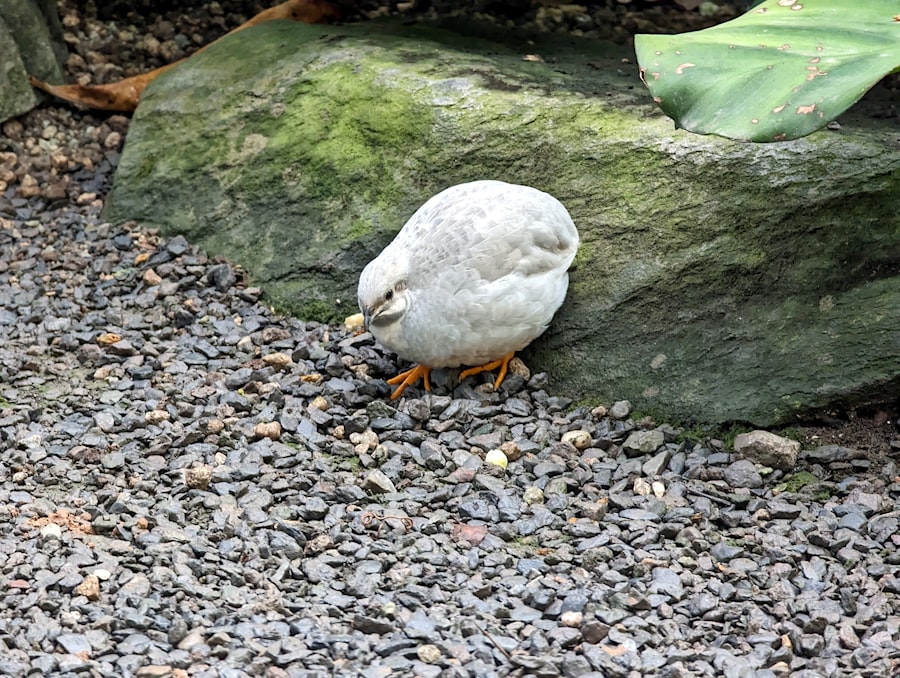
Breeding and reproduction are natural behaviors for pheasants and quail, and understanding these processes is essential for successfully keeping them together. Both species have specific breeding behaviors that should be considered when managing their care. Pheasants are known for their elaborate courtship displays during the breeding season, which can lead to aggressive behavior between males. Providing enough space and hiding spots can help minimize aggression during this time. Quail are ground-nesting birds that require suitable nesting sites with plenty of cover to protect their eggs from predators. Providing nesting boxes or natural cover can help encourage successful breeding in quail. It’s also important to monitor the reproductive behavior of both species to ensure that they have the resources they need to successfully raise their young. By understanding the unique breeding behaviors of pheasants and quail, you can create an environment that supports successful reproduction while minimizing stress and aggression.
Tips for Successfully Keeping Pheasants and Quail Together
Successfully keeping pheasants and quail together requires careful planning and management. Providing enough space and a diverse habitat is essential for accommodating the unique needs of both species. Monitoring their diet and nutrition can help ensure that they receive the essential nutrients they need to stay healthy and active. Regular health checks and proactive disease management can help prevent illness and maintain a thriving flock. Understanding the breeding behaviors of both species is essential for supporting successful reproduction while minimizing stress and aggression. By following these tips and staying proactive about managing their care, you can create a harmonious environment where pheasants and quail can coexist peacefully while thriving in your farm or aviary.
In conclusion, keeping pheasants and quail together can be a rewarding experience when done thoughtfully and responsibly. By understanding their compatibility, habitat needs, feeding requirements, health management, breeding behaviors, and following key tips for success, you can create an environment where both species can thrive while bringing joy and benefits to your farm or aviary. With careful planning and proactive management, you can enjoy the beauty and benefits of keeping pheasants and quail together while ensuring their health and well-being for years to come.
If you’re interested in keeping pheasants with quail, you may also want to learn about caring for goslings. Check out this informative article on how to care for goslings to ensure you have the knowledge and resources to successfully raise these adorable young geese.
FAQs
What are the benefits of keeping pheasants with quail?
Keeping pheasants with quail can provide several benefits, including natural pest control, increased biodiversity, and a more dynamic and interesting environment for bird enthusiasts.
What are some important considerations when keeping pheasants with quail?
It is important to consider the space requirements, diet compatibility, and potential for aggression between pheasants and quail when keeping them together. Additionally, providing appropriate shelter and nesting areas for both species is crucial.
What should be the housing requirements for pheasants and quail when kept together?
The housing for pheasants and quail should provide ample space for both species to move around freely. It should also include separate areas for nesting and roosting to prevent aggression and ensure the well-being of both species.
What should be the diet for pheasants and quail when kept together?
The diet for pheasants and quail should be carefully balanced to meet the specific nutritional needs of each species. This may include a combination of commercial game bird feed, seeds, insects, and greens.
Are there any potential challenges when keeping pheasants with quail?
One potential challenge when keeping pheasants with quail is the risk of aggression between the two species, especially during breeding season. It is important to monitor their behavior closely and provide adequate space and resources to minimize conflicts.
Meet Walter, the feathered-friend fanatic of Florida! Nestled in the sunshine state, Walter struts through life with his feathered companions, clucking his way to happiness. With a coop that’s fancier than a five-star hotel, he’s the Don Juan of the chicken world. When he’s not teaching his hens to do the cha-cha, you’ll find him in a heated debate with his prized rooster, Sir Clucks-a-Lot. Walter’s poultry passion is no yolk; he’s the sunny-side-up guy you never knew you needed in your flock of friends!

